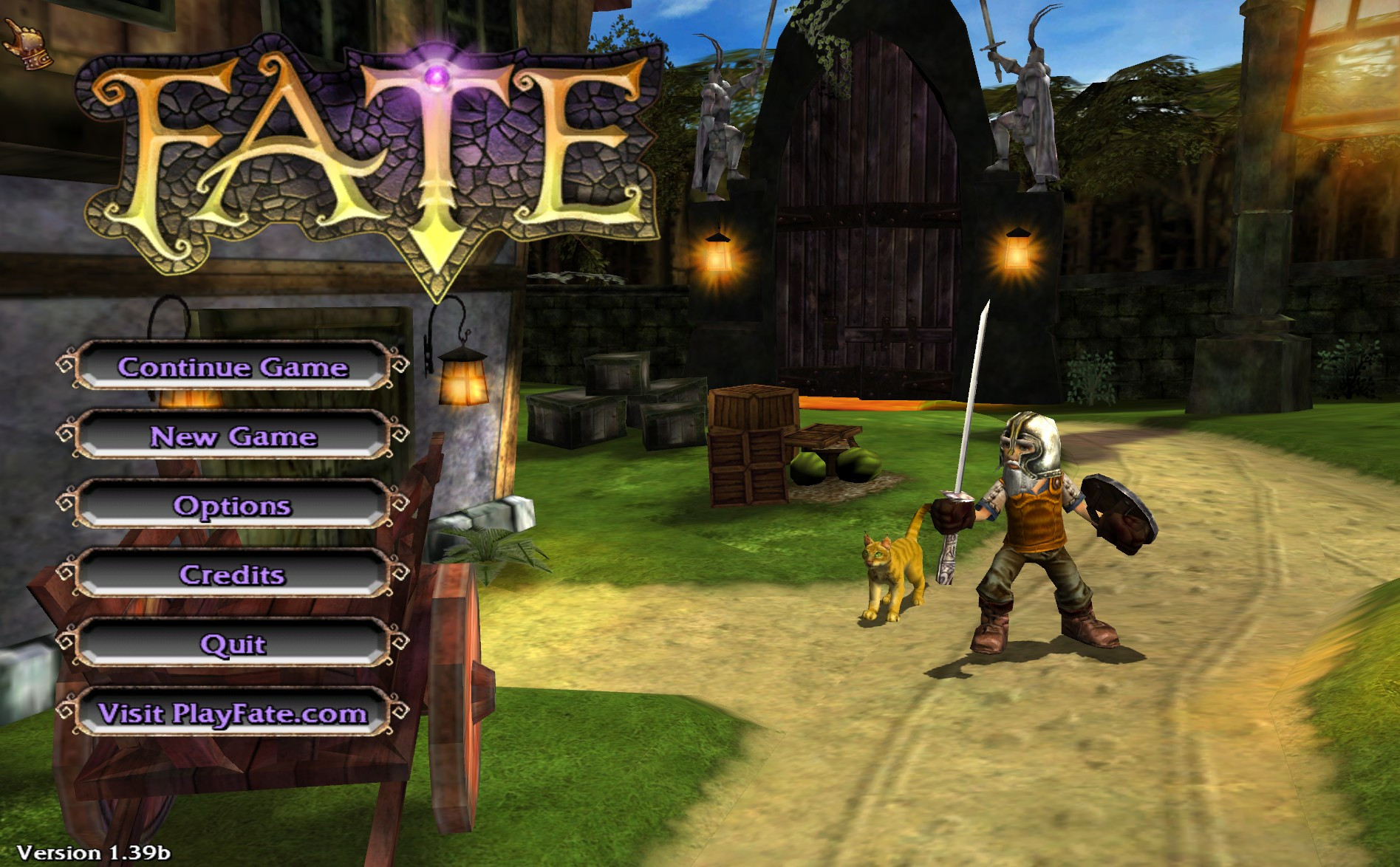FATE: The ARPG That Was Everywhere

FATE is a game I saw at Walmart. And GameStop. And online. And bundled with computers sold around late 2005 through 2006. It was, for the span of about a year, seemingly everywhere I looked.
But while everyone seemed to know about it, no one I knew IRL played it. Opinions were hardly more informed online, where gamer forums often mocked the game as "Diablo for kids." Or so I remember. The game didn't receive a lot of reviews, either, though the few that were published gave it high marks.
At some point, as I recall, I did play it. Most likely as a demo, because demos of the game were circulated widely online and as pre-installed software on Windows PCs. It's a perfect game to bundle with a new system: it looks inoffensive, it's easy to pick up and while it had 3D graphics, they were low-end (an 800MHz Pentium III and video solution with 32MB of VRAM was all it required).
Having always been curious about the game, I've started to pick it up now and again, as I plan to cover it on Computer Gaming Yesterday in celebration of the game's 20th anniversary.
And you know what? It's pretty good.
FATE is, above all else, a great example of how far a game can get if it's simple, intuitive, and feels good to play.
Though it's basic (the game has no skill tree, no special abilities beyond spells, and foes exercise a limited number of attacks, effects, and abilities), the simple act of running up to a foe and slapping them with a weapon is fun. It feels immediate and rewarding.
In fact, I'll say something heretical: at its core, I think FATE better executes the simple joy of running up and hitting a foe than do its predecessors, including Diablo and Diablo 2, a pair of games that, while legendary, had more than their fair share of oddities in how hits were calculated and how characters moved across the map.
FATE is also wonderfully, or bizarrely (I haven't yet decided which), committed to randomness as a game mechanic.
The game begins by randomly generating a foe that you must slay on a randomly selected level deeper in its only dungeon. All the quests are randomly generated. Most of the items are, as well, and with what seems to be a pretty large range on the stats that can roll. Dungeon layouts, and the monsters you find within them, are random. And then there's the fishing mechanic, which mostly nets you what you'd expect (fish!) but can occasionally net you a very high-value item.
Somehow, it all comes together rather well. You never know what you're going to get, so the game feels like a giant ARPG slot machine. Except that, unlike a slot machine, you never have to pay in, and you can test your luck as quickly as your mouse hand will let you.
It is, however, still a rather basic game. I haven't beaten it yet – by the numbers I'm about halfway through – but I expect that if I don't run into any bosses that are randomly nigh-impossible, which can happen, I'll probably finish a run in about 15 hours. There's no end game once you defeat the final boss and, since there's no skill trees or special abilities beyond magic, the build types boil down to fighter, archer, and mage.
But you know what? I find that kind of refreshing. I'm not a huge fan of how the ARPG has skewed towards embracing literally endless grind in a live-service format. I don't find the assault of updates and changes made by Path of Exile and Diablo 4 appealing. They feel more like lifestyle commitments than games, like hobbies in themselves.
And, frankly, I don't want to play a single character for more than one hundred hours. Growing and progressing a fresh character is most of the fun, and I simply don't have time to commit to ARPGs that imagine players will become super-invested.
As I said, I plan to cover this on my YouTube channel. And in fact, I've already spoken with Travis Baldree, who developed the game solo while working at WildTangent. He shed a lot of light on the game's development, so I'm looking forward to sharing that with my viewers in a few months... more to come there, soon.
